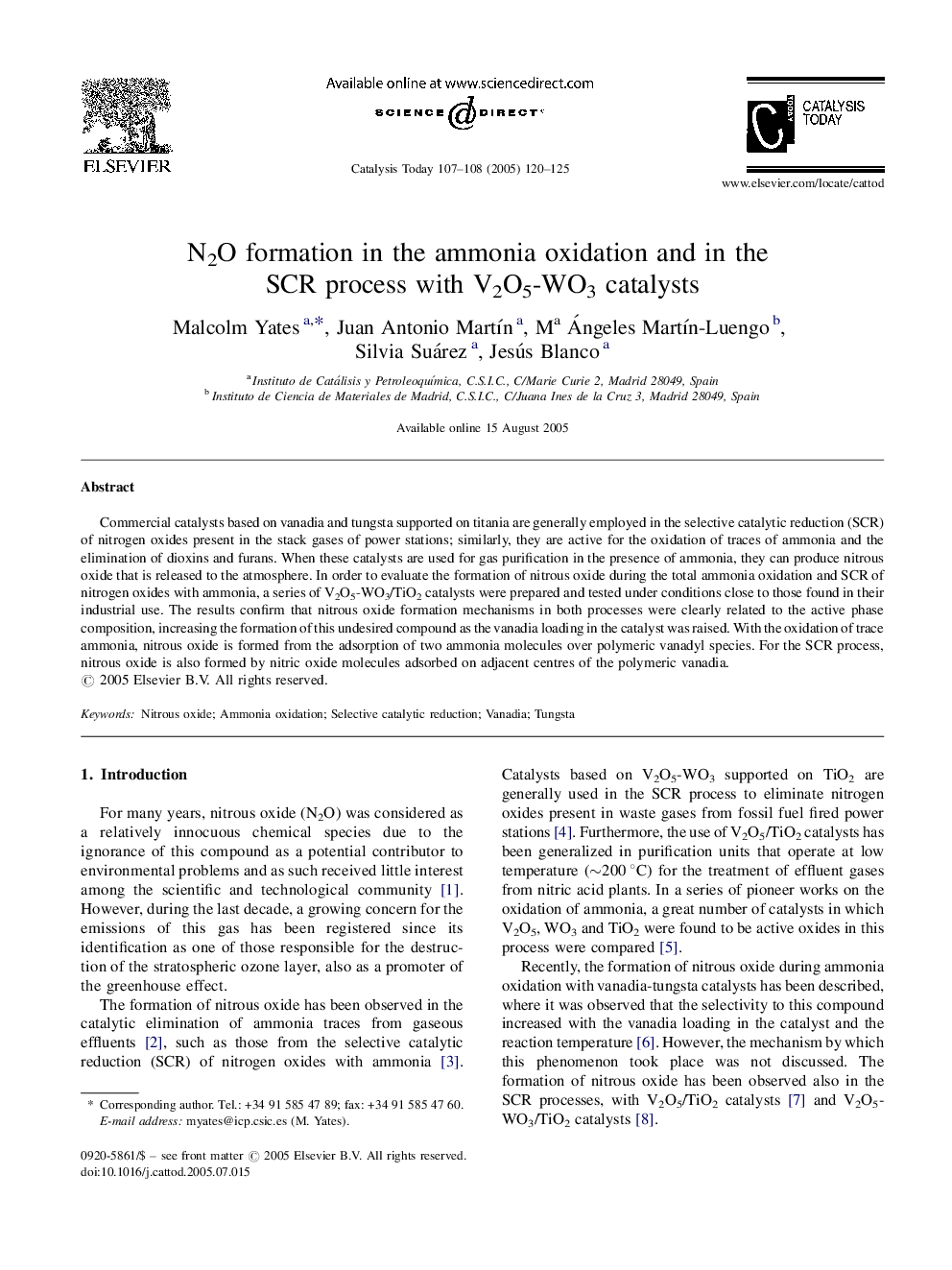| کد مقاله | کد نشریه | سال انتشار | مقاله انگلیسی | نسخه تمام متن |
|---|---|---|---|---|
| 9610175 | 47163 | 2005 | 6 صفحه PDF | دانلود رایگان |
عنوان انگلیسی مقاله ISI
N2O formation in the ammonia oxidation and in the SCR process with V2O5-WO3 catalysts
دانلود مقاله + سفارش ترجمه
دانلود مقاله ISI انگلیسی
رایگان برای ایرانیان
کلمات کلیدی
موضوعات مرتبط
مهندسی و علوم پایه
مهندسی شیمی
کاتالیزور
پیش نمایش صفحه اول مقاله

چکیده انگلیسی
Commercial catalysts based on vanadia and tungsta supported on titania are generally employed in the selective catalytic reduction (SCR) of nitrogen oxides present in the stack gases of power stations; similarly, they are active for the oxidation of traces of ammonia and the elimination of dioxins and furans. When these catalysts are used for gas purification in the presence of ammonia, they can produce nitrous oxide that is released to the atmosphere. In order to evaluate the formation of nitrous oxide during the total ammonia oxidation and SCR of nitrogen oxides with ammonia, a series of V2O5-WO3/TiO2 catalysts were prepared and tested under conditions close to those found in their industrial use. The results confirm that nitrous oxide formation mechanisms in both processes were clearly related to the active phase composition, increasing the formation of this undesired compound as the vanadia loading in the catalyst was raised. With the oxidation of trace ammonia, nitrous oxide is formed from the adsorption of two ammonia molecules over polymeric vanadyl species. For the SCR process, nitrous oxide is also formed by nitric oxide molecules adsorbed on adjacent centres of the polymeric vanadia.
ناشر
Database: Elsevier - ScienceDirect (ساینس دایرکت)
Journal: Catalysis Today - Volumes 107â108, 30 October 2005, Pages 120-125
Journal: Catalysis Today - Volumes 107â108, 30 October 2005, Pages 120-125
نویسندگان
Malcolm Yates, Juan Antonio MartÃn, Ma Ángeles MartÃn-Luengo, Silvia Suárez, Jesús Blanco,